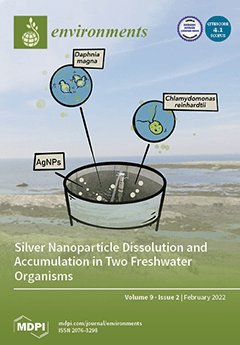Open AccessArticle
Application of Calcified Structures in Fish as Indicators of Metal Exposure in Freshwater Ecosystems
by
Vlatka Filipović Marijić, Tatjana Mijošek, Zrinka Dragun, Anika Retzmann, Andreas Zitek, Thomas Prohaska, Niko Bačić, Zuzana Redžović, Ivana Grgić, Nesrete Krasnići, Damir Valić, Damir Kapetanović, Jakov Žunić, Dušica Ivanković, Irena Vardić Smrzlić and Marijana Erk
Cited by 3 | Viewed by 4347
Abstract
Although there are common and well-established bioindicator organisms and tissues, there is still a need for reliable and sensitive bioindicators in aquatic environments. In the present pilot study, calcified structures in fish were applied as indicators of metal exposure in combination with commonly
[...] Read more.
Although there are common and well-established bioindicator organisms and tissues, there is still a need for reliable and sensitive bioindicators in aquatic environments. In the present pilot study, calcified structures in fish were applied as indicators of metal exposure in combination with commonly used fish soft tissues and intestinal parasites, therefore comprising short- and long-term indicators. Patterns of metal accumulation and distribution in soft (muscle, liver) and hard (scales, otoliths) tissues of brown trout (
Salmo trutta Linnaeus, 1758) and their intestinal parasites, acanthocephalans (
Dentitruncus truttae Sinzar, 1955), from the Krka River influenced by industrial and municipal wastewaters were estimated and compared. Most elements had higher levels in acanthocephalans, scales and liver than muscle and otoliths, possibly reflecting differences in metal uptake routes, tissue function and metabolic activity. Despite the recorded differences in metal contents, all applied bioindicators reflected environmental conditions in a similar way, indicating higher levels of most elements in fish from the contaminated rather than from the reference site. Acanthocephalans were confirmed as sensitive bioindicators due to effective metal accumulation capacity, while the combination of soft and hard tissues provided extended temporal information on metal exposure. Wastewater impact was evidenced as moderate metal pollution by all applied indicators and pointed to present but also long-term disturbances in the Krka River and the importance of continuous monitoring and protective actions.
Full article
►▼
Show Figures





